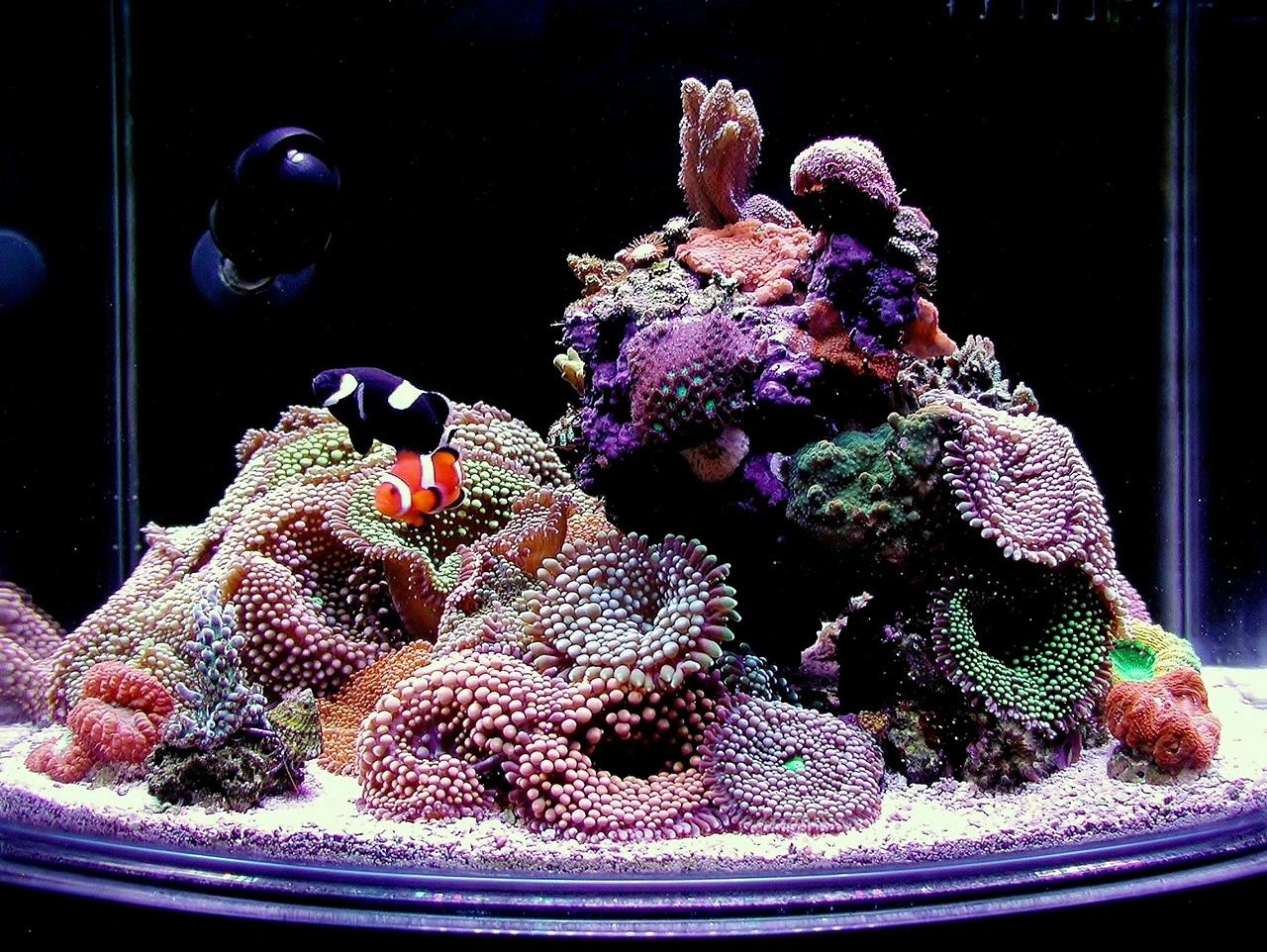Stunning 12-Gallon Reef Tank – Nano sapiens's TOTM | NanoReef

Tank Specifications
Volume: 12 Gallons / 45 Liters
Dimensions (L × W × H):
15.0" ×
15.0" ×
13.0"
38.1cm ×
38.1cm ×
33.0cm
Equipment List
- Salt: Instant Ocean
Frequently Asked Questions
What is the maintenance routine for a reef tank?
For this 12-gallon nano reef tank, the maintenance routine includes water changes of 5% twice a week (10% total per week) using a mixture of Micro-Lube Lift and Instant Ocean along with Reverse Osmosis water. Detritus is removed through live rock basting and gravel vacuuming weekly. The rear chambers are vacuumed monthly, and vacuuming under the live rock is done every few months.
How often should I test the water parameters?
Water parameters should be tested twice a week for alkalinity, weekly for calcium, specific gravity, and magnesium, and occasionally for nitrate and phosphate. Regular testing helps in maintaining stable water conditions.
What additives do I need for my reef tank?
Additives used in this nano reef include Kalk (calcium hydroxide) and iodine, which is dosed 3-4 times a week to support coral health and growth.
How should I feed the fish in a reef tank?
Fish in this reef tank are fed 3-4 times a day, using a rotating combination of frozen and dried foods such as Rod's Food, Ocean Nutrition Prime Reef Flakes, OSI Spirulina Flakes, and Aqueon Marine Granules. This varied diet ensures balanced nutrition.
What are the feeding requirements for corals?
Corals in this reef tank are fed once a week with a combination of frozen Mysis shrimp, Rod's Food, and baby brine shrimp. This feeding strategy helps improve coral coloration and overall health.
What lighting is used in this reef tank?
The tank is lit with six Ecoxotic LED Stunner Strips plus a DIY LED strip. The lighting is controlled by two circuits, one for an 8-hour period with most LEDs and the other for a 12-hour period specifically for the Royal Blue Stunner strip.
How is the tank filtered?
This nano reef utilizes a natural filtration method. The biological filtration relies solely on live rock and live sand, without mechanical or chemical filtration. This approach is designed to maintain simplicity and stability over time.
How can I manage algae outbreaks in a reef tank?
To manage algae outbreaks, it's important to regularly vacuum detritus during water changes and blow out buildup from inside the live rock with a turkey baster. Additionally, consider avoiding overfeeding and maintaining stable water parameters.
What should I do if I encounter pests in the tank?
To address pests such as amphipods or harmful algae, reevaluate your tank's feeding and maintenance regimen. In this case, adding a Black Barred Convict Goby helped control large amphipod populations. Stability in water quality and careful monitoring of pests is key.